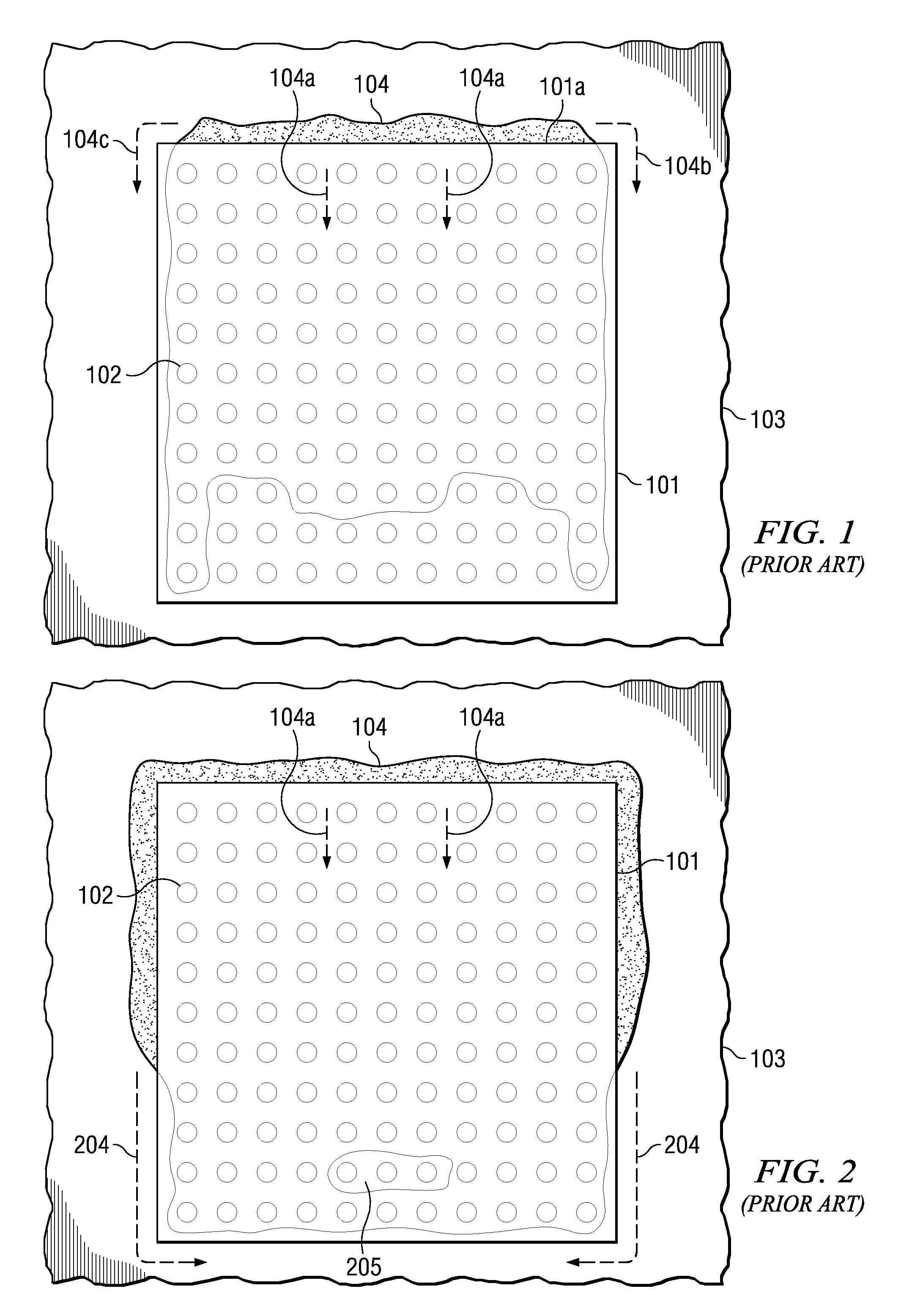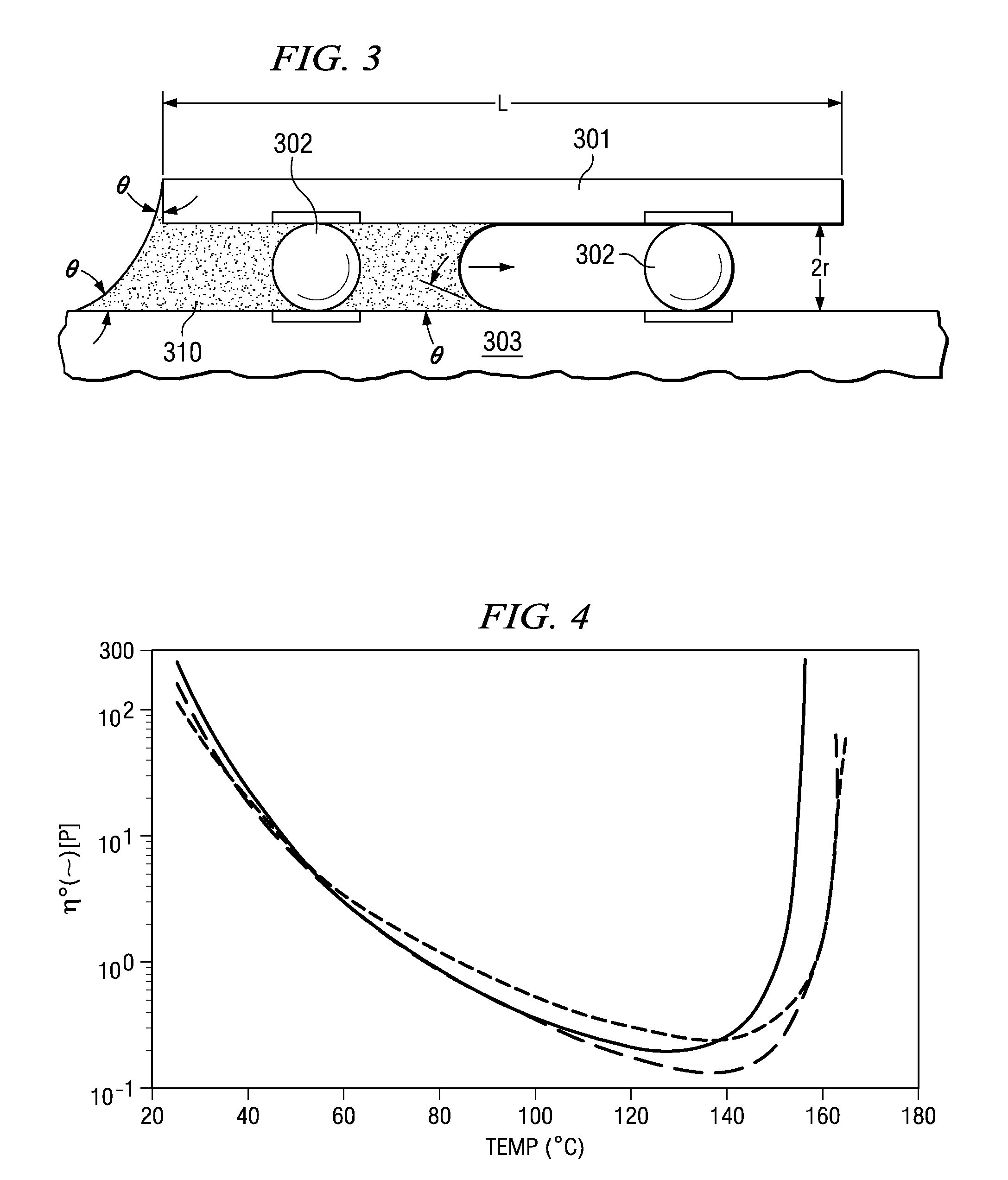Thermal method to control underfill flow in semiconductor devices
a semiconductor device and underfill technology, applied in the field of electronic systems and semiconductor devices, can solve the problems of shrinkage of the bump center-to-center pitch, insufficient approaches, and event-driven assembly failure, and achieve the effects of simple and low-cost assembly process, high number and small bump siz
- Summary
- Abstract
- Description
- Claims
- Application Information
AI Technical Summary
Benefits of technology
Problems solved by technology
Method used
Image
Examples
Embodiment Construction
[0021]The schematic top X-ray views of FIGS. 1 and 2 illustrate a typical example of an underfill process in known technology of a semiconductor chip assembled on a substrate. Looking through the flip-assembled transparent chip 101, FIGS. 1 and 2 show rows of solder connections 102 connecting the chip and to the substrate 103 (also transparent). The solder connections 102 between chip 101 and substrate 103 create a gap. A quantity of liquid, viscous polymeric material 104 is deposited along chip side 101a for filling this gap; capillarity pulls the polymer into the gap and provides the mechanism for filling.
[0022]Capillarity is the capillary action by which the surface of a liquid, where it contacts a solid, is elevated or depressed, because of the relative attraction of the molecules of the liquid for each other and for those of the solid. Capillary attraction is the force of adhesion existing between a solid and a liquid in capillarity.
[0023]Capillary action becomes effective, whe...
PUM
 Login to View More
Login to View More Abstract
Description
Claims
Application Information
 Login to View More
Login to View More - R&D
- Intellectual Property
- Life Sciences
- Materials
- Tech Scout
- Unparalleled Data Quality
- Higher Quality Content
- 60% Fewer Hallucinations
Browse by: Latest US Patents, China's latest patents, Technical Efficacy Thesaurus, Application Domain, Technology Topic, Popular Technical Reports.
© 2025 PatSnap. All rights reserved.Legal|Privacy policy|Modern Slavery Act Transparency Statement|Sitemap|About US| Contact US: help@patsnap.com



